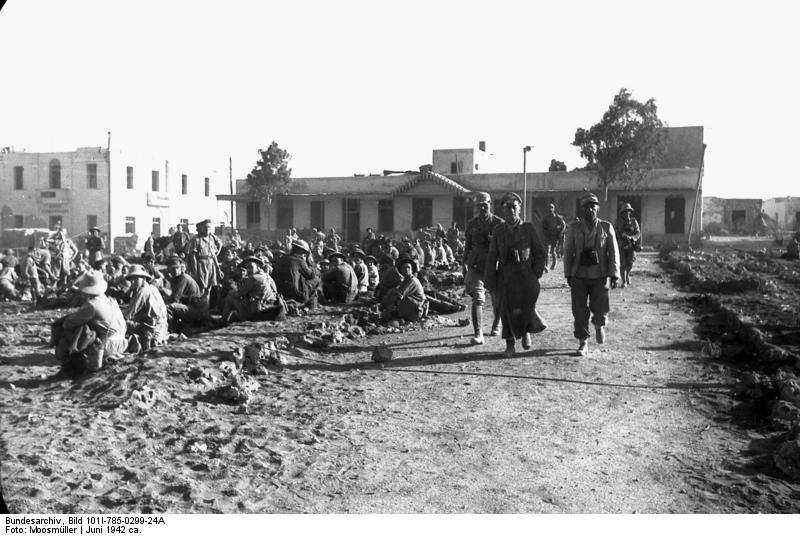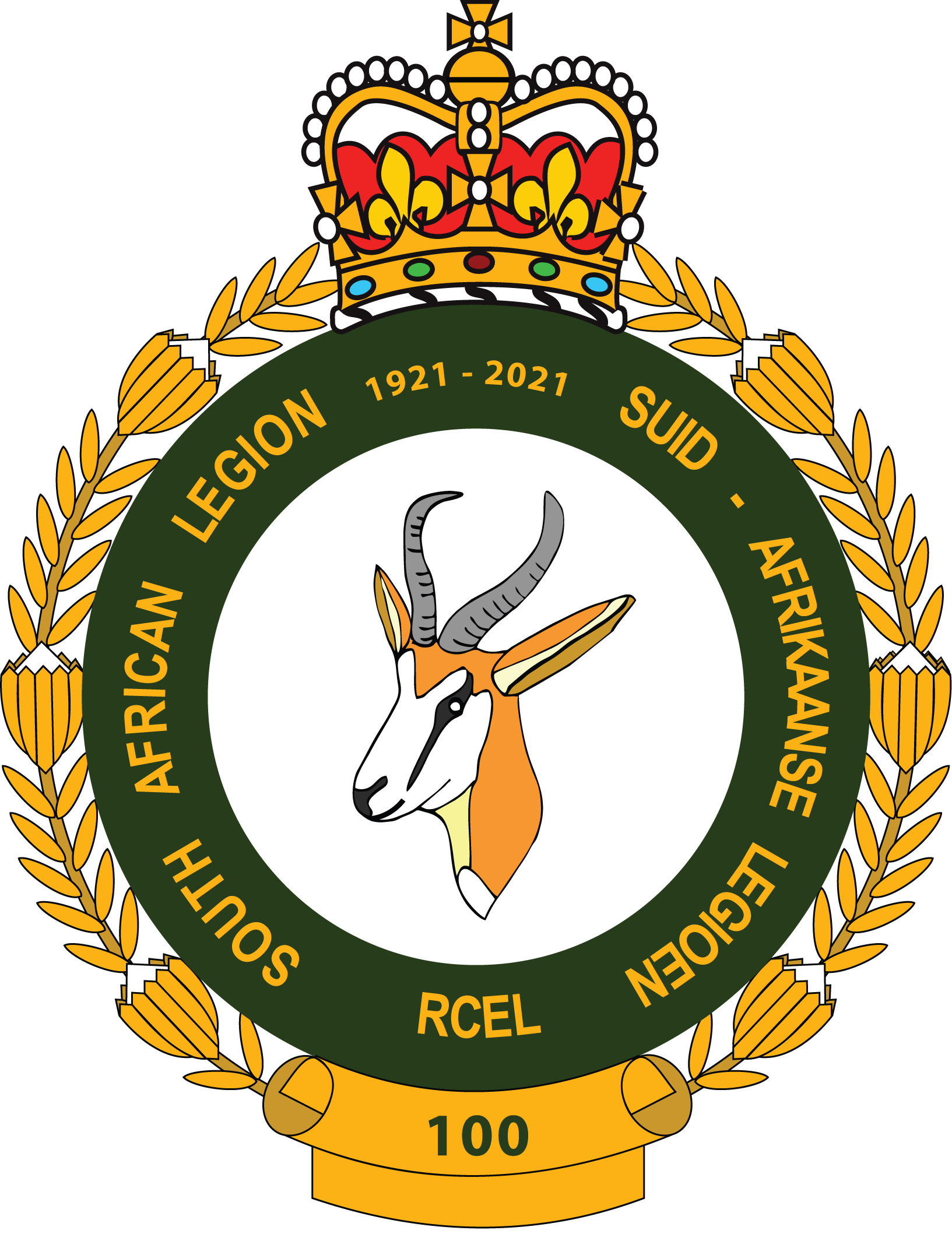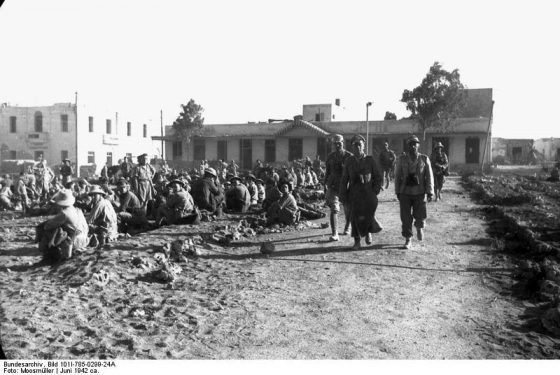
Collated by Peter Dickens
The main part of the garrison was to be formed by the 1st South African Division with General Klopper – a major general of 1 month’s standing – named commander of the stronghold. The port’s physical defenses, while not in good shape, were hardly weaker than they had been in April 1941. The barbed wire, tank traps and well-placed gun emplacements were still there. Equipment was, if anything, a bit better.
There were 2 partial medium-artillery regiments and the garrison was strong in field artillery. Although there were no anti-tank regiments, there were about 70 anti-tank guns, including 18 6-pounders as well as 18 37mm anti-aircraft guns and a number of Bofors plus about 55 tanks. The strength of the garrison was about the same, some 35,000 men. There was important difference, and it was one which Klopper, none too sure of himself or his position, was ill-equipped to deal with: this time the defending troops were exhausted, their morale was lower, and the camp was filled with a feeling of insecurity and impermanence.
As usual, Rommel had devised a ruse for capturing Tobruk. Only his infantry approached the western perimeter, while his mobile forces swept on past, to give the impression that he was heading straight for the border as he had done the year before – and sending messages in clear to reinforce the illusion. Just before Bardia he and the 90th Light Division turned back to join the Afrika Korps assault divisions and the XX Italian Motorized Corps, who had been waiting southeast of the city. He was using the plan he had intended for 23 November 1941.
Rommel’s zero hour was 05h20 on 20 June 1942. As the first rays of sunlight began to creep over the desert the long black lines of tanks, trucks and infantry slowly started to move forward. As it grew louder small black dots appeared on the horizon, which, as they drew nearer, resolved themselves into waves of Stukas and Ju 88’s. Every airworthy Axis plane in North Africa had been pressed into service for the battle. As the heavy artillery began to fire, the planes released their bombs and quickly got out of the way for the next wave, operating a shuttle service between the defense perimeter and El Adem airfield, 10 miles away. They pounded a gap open 600 yards wide. Behind them, under cover of artillery barrage and half-hidden by smoke and dust, German and Italian sappers raced forward to lift mines and bridge the tank traps with tanks and infantry racing through the gaps. As they move forward, they lit green, red and purple flares and the Stukas dropped their bombs just ahead of the advancing, multi-coloured smoke screen while the other planes and artillery blasted the enemy’s rear with shells and bombs.
The timing of the entire operation was perfect. Panzer Army Afrika might well have been on maneuvers. The first shock troops broke into the fortress from the southeast. A second group breached the defences in the south, along the El Adem road, soon after. As tanks poured into the city they fanned out and headed for the harbor, while parachutists were dropped behind enemy lines to disorganised the defences and protect the supply dumps from demolition.
Inside Tobruk the situation was chaotic. General Klopper – his HQ’s bombed out, his radio and telephone wrecked and his code booked destroyed, lost the last vestige of control. Disconsolately he and his staff watched the Panzers race past their HQ’s on their way to capture the fuel dumps in the harbor. Some British troops broke out to the east. Others fought grimly on, while still others, like the South Africans in the west and southwest, hardly realized anything was happening until the 90th Light came up on their rear.
By dawn 21 June Tobruk was a pile of ruins. The streets were a maze of rubble and in the harbor the masts and funnels of sunken ships rose pathetically from the water. General Klopper gave his compass and staff car to 7 young men from South African 6th Brigade who were determined to escape, saying, ”I wish I was coming with you.”
A few hours later a small part of officers set off in a truck, a little white flag fluttering over the hood, and at 09h40 on Via Balbo Klopper officially turned the city over to Rommel. Soon after, a large white flag was hoisted over 6th Brigade HQ’s by South African native drivers.
The signal to surrender created even more confusion. Some units never got it. Others, like the 3rd Coldstream, decided to ignore it and try to escape. The Cameron Highlanders, along with remnants of some of the Indian brigades, held out for more than 24 hours – surrendering only after being told that if they did not the Germans would concentrate every piece of artillery in Tobruk on their position. Finally giving in, they marched down to the prisoners of war cage in parade formation, with the pipes skirling “The March of the Cameron Men.” As they approached every man along the way – prisoner and German sentry alike – snapped to attention.
After 2 years in British hands Tobruk had fallen in 2 days – and despite Rommel’s anger at the extend of the destruction effected by British demolition squads on vehicle parks and fuel dumps, he still had captured enough o carry him on his drive to Egypt. The fall of Tobruk came as a shattering blow to the British public (as Churchill had known it would), as well as to the Australians and South Africans. General Klopper came in for most of the criticism, but he was not entirely to blame. The decision to invest in Tobruk at all had been, in General Bayerlein’s phrase, ”a fatal decision.”
Though a more experienced general might have made more progress toward pulling the garrison into shape in time, there was also confusion among the British High Command. For example, Auchinleck realized full well that Rommel was almost certain to stick to his original plan to attack from the southeast. When Ritchie flew into Tobruk on 16 June 1942 to confer with the defenders, he warned Klopper to pay special attention to the western perimeter.
On 22 June Rommel received a message from the Fuhrer informing him that at the age 49 he had just been appointed Germany’s youngest Field Marshal. Rommel celebrated that night with canned pineapple and a small glass of whisky, but after dinner he wrote his wife, ”Hitler has made me a Field Marshal. I would much rather he had given me one more division.”
True to his cardinal rule – he never give the enemy breathing space – he did not celebrate long. The next day his Order of the Day read: ”Soldiers of the Panzer Army Africa! Now we must utterly destroy the enemy! During the coming days I shall be making great demands upon you once more, so that we may reach our goal.” The Nile.
He would never get there. Hitler, by discontinuing the attack on Malta and refusing to send Rommel adequate supplies, would make defeat in the desert inevitable. Later, the Field Marshal would find himself presiding over another fiasco – the defence of Normandy – and still later would come involvement in the plot against Hitler and, eventually, forced suicide.
All this was in the future; in June 1942 the Desert Fox was as he is still remembered – dashing, resourceful and brave, racing across the desert with tanks of the Afrika Korps, heading to the pyramids of Egypt ….

